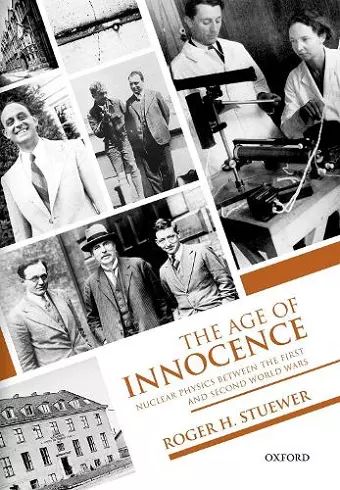The Age of Innocence
Nuclear Physics between the First and Second World Wars
Format:Hardback
Publisher:Oxford University Press
Published:7th Aug '18
Currently unavailable, and unfortunately no date known when it will be back
This hardback is available in another edition too:
- Paperback£34.99(9780192865557)

The two decades between the first and second world wars saw the emergence of nuclear physics as the dominant field of experimental and theoretical physics, owing to the work of an international cast of gifted physicists. Prominent among them were Ernest Rutherford, George Gamow, the husband and wife team of Frédéric and Irène Joliot-Curie, John Cockcroft and Ernest Walton, Gregory Breit and Eugene Wigner, Lise Meitner and Otto Robert Frisch, the brash Ernest Lawrence, the prodigious Enrico Fermi, and the incomparable Niels Bohr. Their experimental and theoretical work arose from a quest to understand nuclear phenomena; it was not motivated by a desire to find a practical application for nuclear energy. In this sense, these physicists lived in an 'Age of Innocence'. They did not, however, live in isolation. Their research reflected their idiosyncratic personalities; it was shaped by the physical and intellectual environments of the countries and institutions in which they worked. It was also buffeted by the political upheavals after the Great War: the punitive postwar treaties, the runaway inflation in Germany and Austria, the Great Depression, and the intellectual migration from Germany and later from Austria and Italy. Their pioneering experimental and theoretical achievements in the interwar period therefore are set within their personal, institutional, and political contexts. Both domains and their mutual influences are conveyed by quotations from autobiographies, biographies, recollections, interviews, correspondence, and other writings of physicists and historians.
Overall, this work would serve as an excellent overview of both the scientific and the political situation in Europe between the wars... Summing Up: Highly Recommended. * CHOICE *
The Age of Innocence is a masterful and authoritative history of nuclear physics during the 1920s and 1930s, constituting perhaps the magnum opus of Roger H. Stuewer, a senior scholar with a decades-long record of leadership in the history of physics...While the history in The Age of Innocence is a generally familiar one, the richness of Stuewer's detailed and authoritative account should make it required reading for all. * Mary Jo Nye, Oregon State University, ISIS *
This volume offers a fascinating glimpse of the internal workings of scientists in a nascent period of atomic and nuclear physics. Stuewer does a brilliant job of first foreshadowing, and then discussing outright, the impact of fascism on so many of these scientists. Of course, anyone already familiar with the story knows the conclusion. The discovery of nuclear fission, and its ultimate role in the development of the first atomic bomb, hovers over the narrative from the beginning. Overall, this work would serve as an excellent overview of both the scientific and the political situation in Europe between the wars. * Professor Todd Timmons, University of Arkansas *
[Stuewer] has produced a masterful single-volume history and exhaustive reference of inter-war nuclear physics, a testament to his decades of work in this area. This volume will especially be a keeper reference even for readers closely familiar with its subject matter. * Cameron Reed, American Journal of Physics *
This excellently written and extremely well researched account is likely to become a classic text for its subject-matter. Any physicist who is interested in the history of our subject during one of its most critical formative periods should acquire this book, from which I have learnt a lot and which I thoroughly recommend. * Peter Bussey, Contemporary Physics *
ISBN: 9780198827870
Dimensions: 248mm x 176mm x 31mm
Weight: 1088g
502 pages